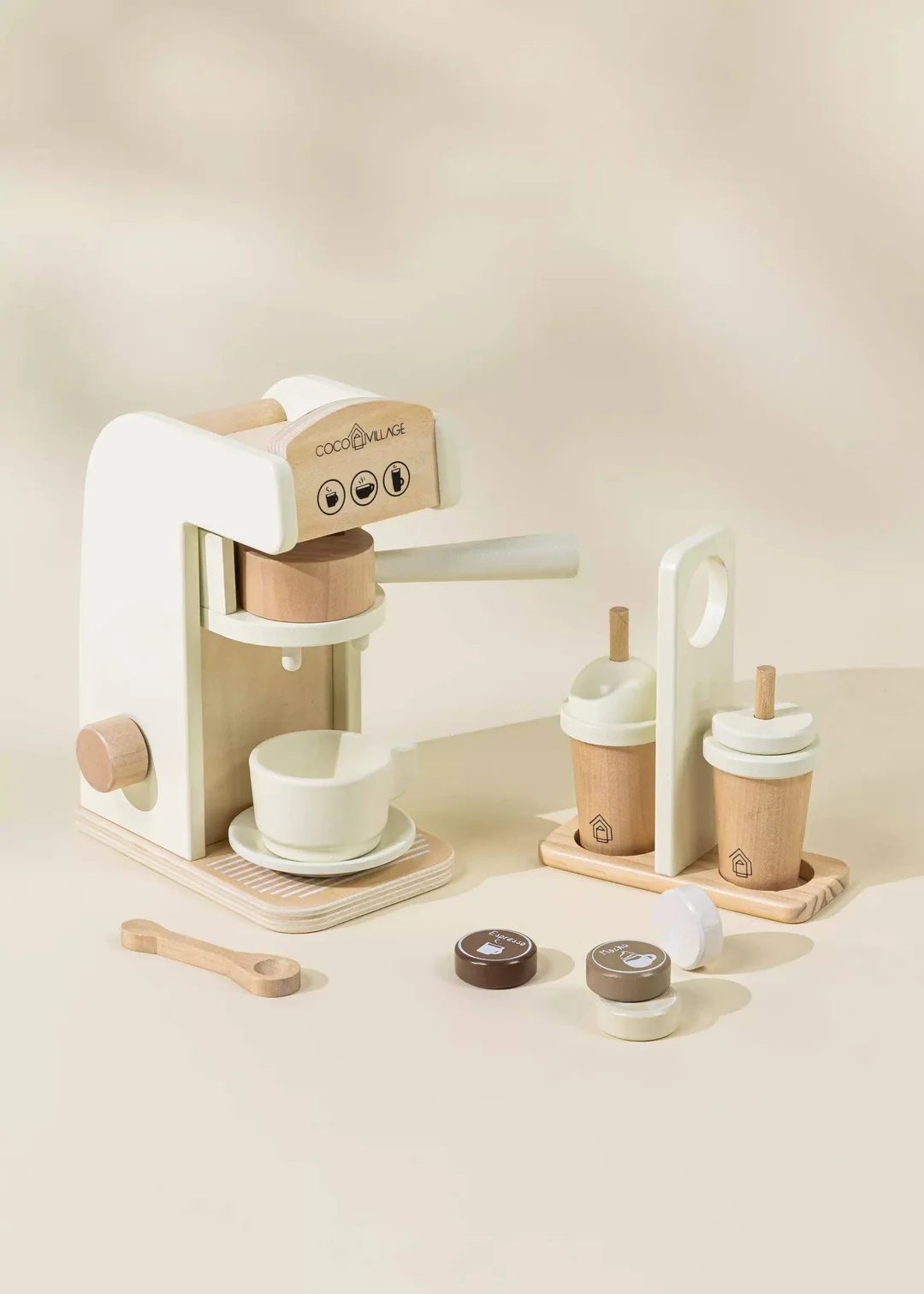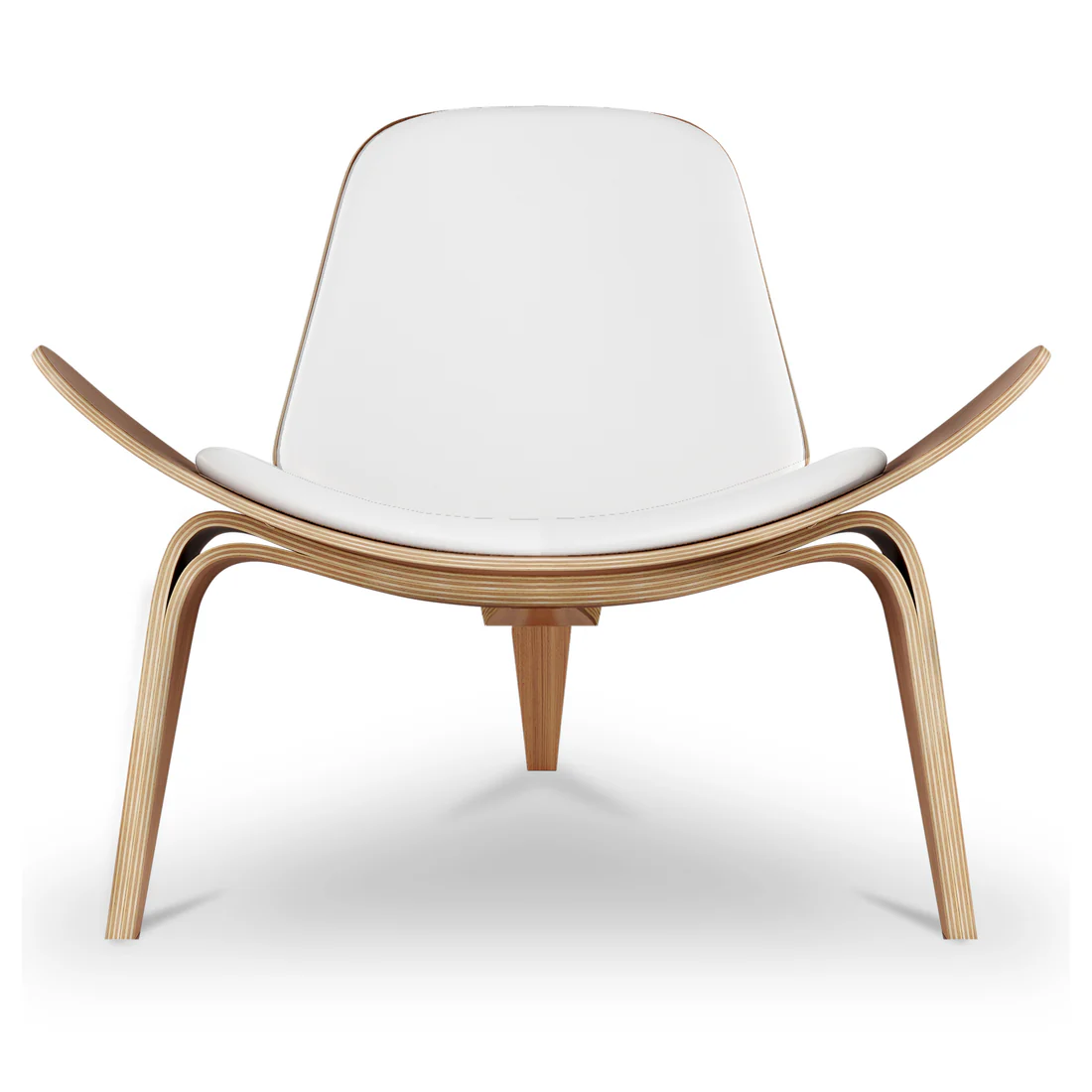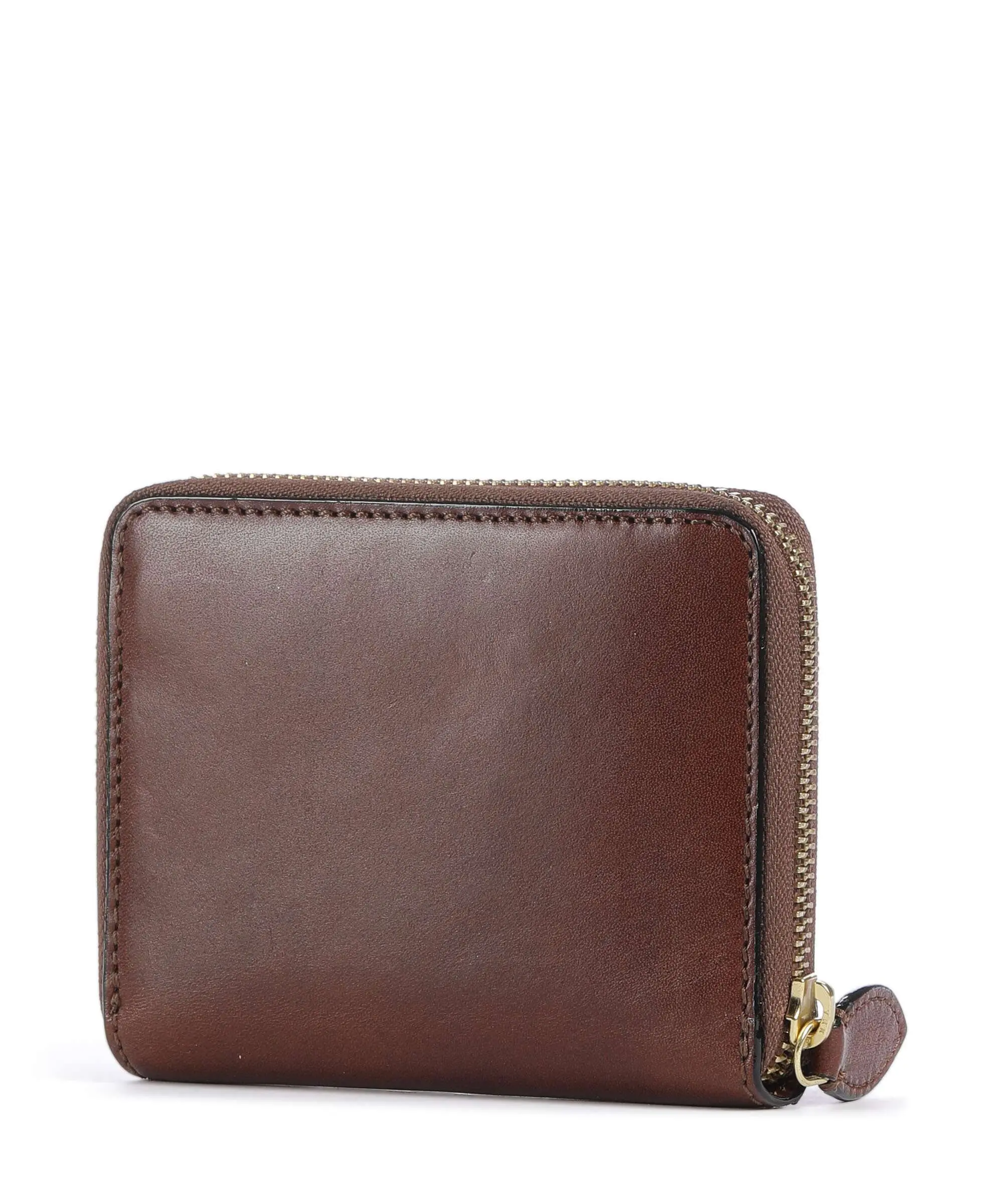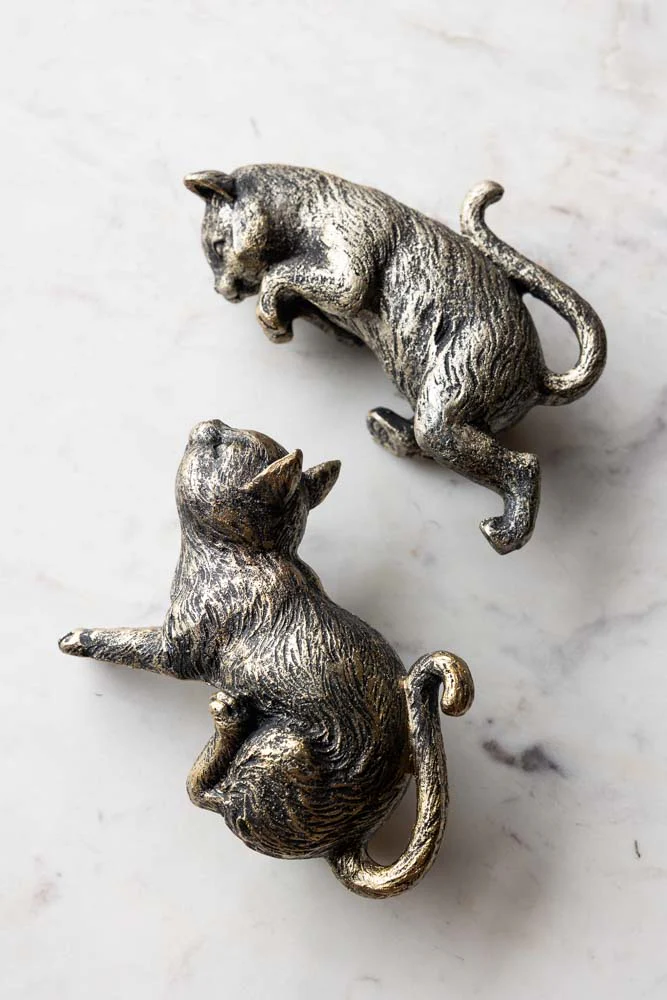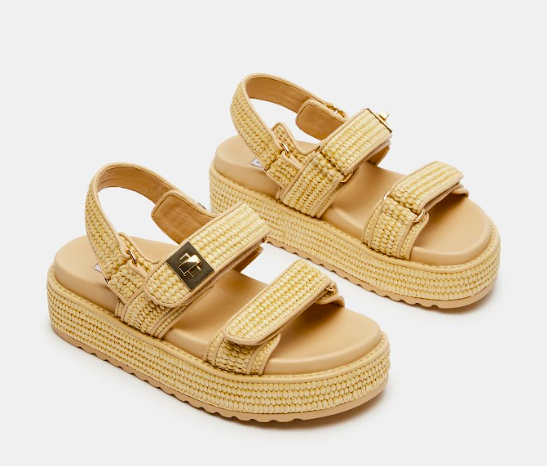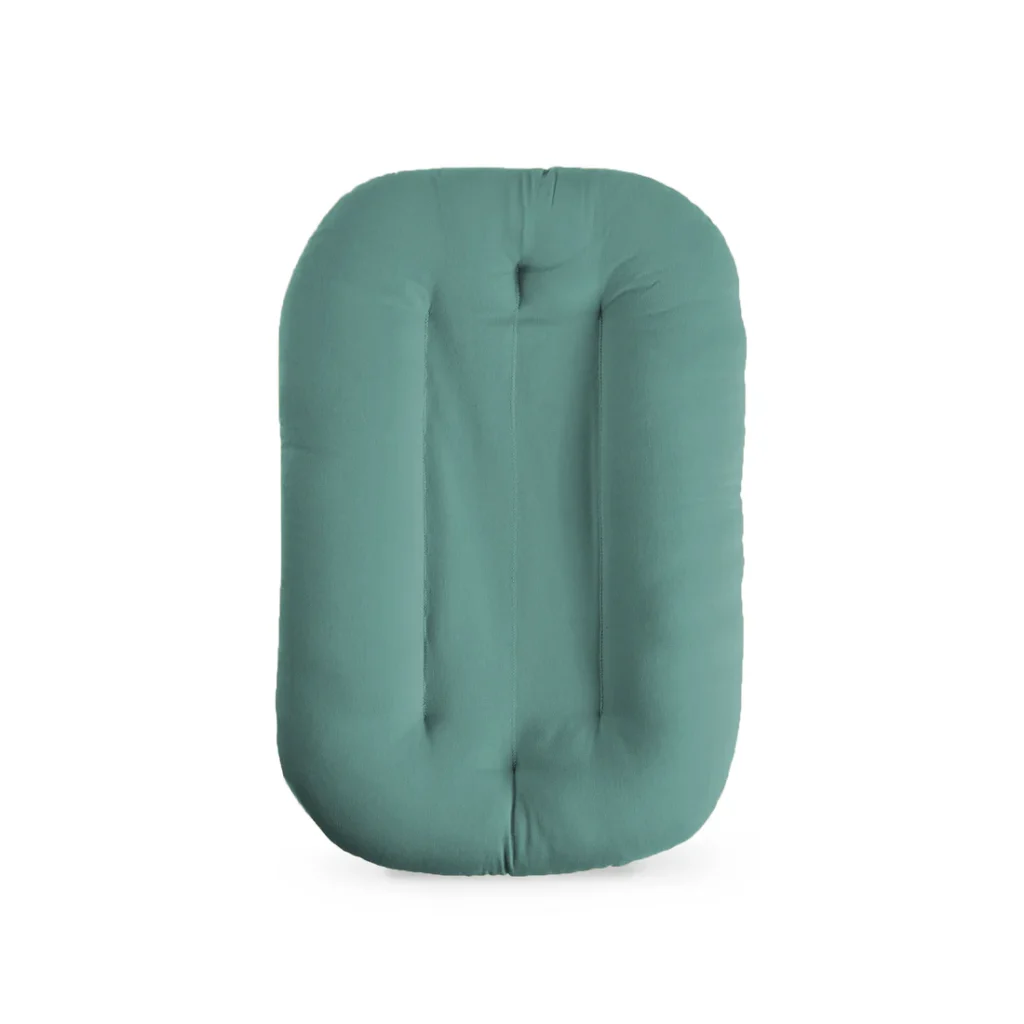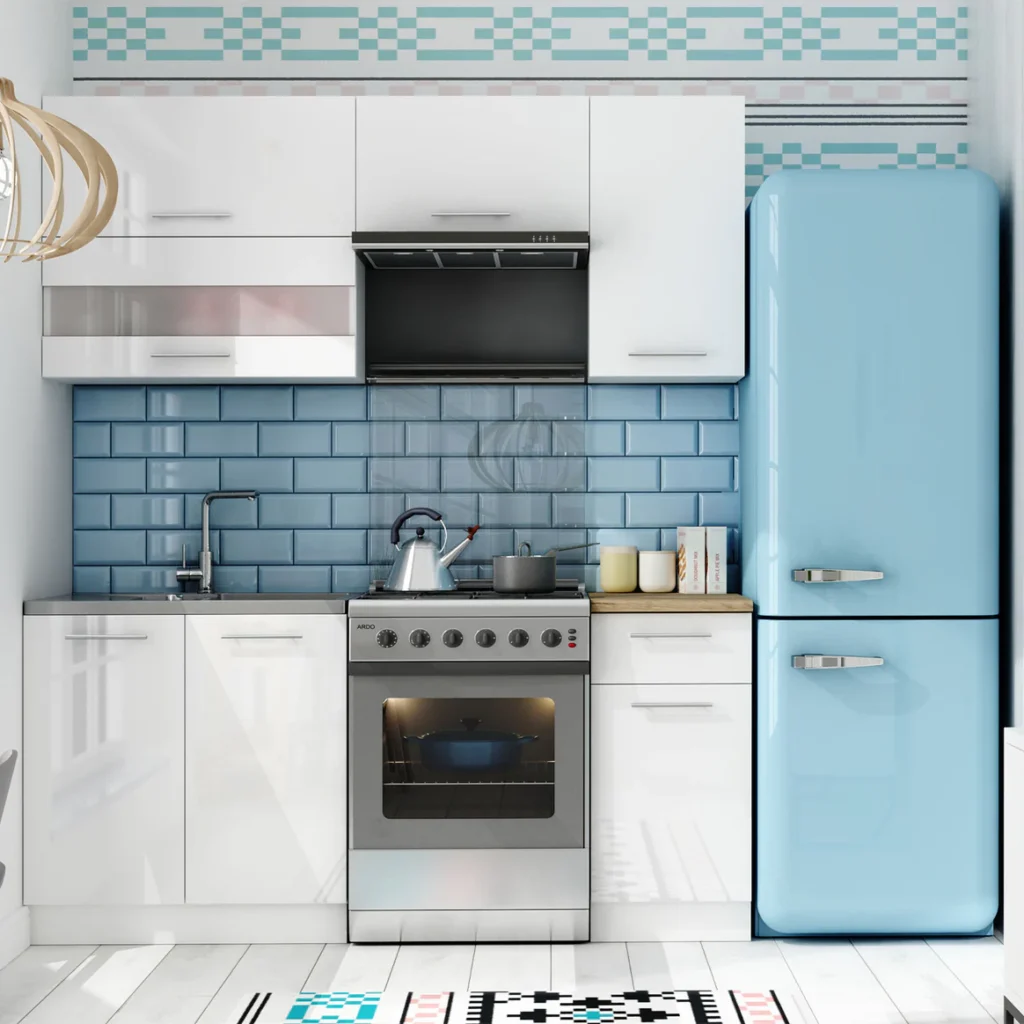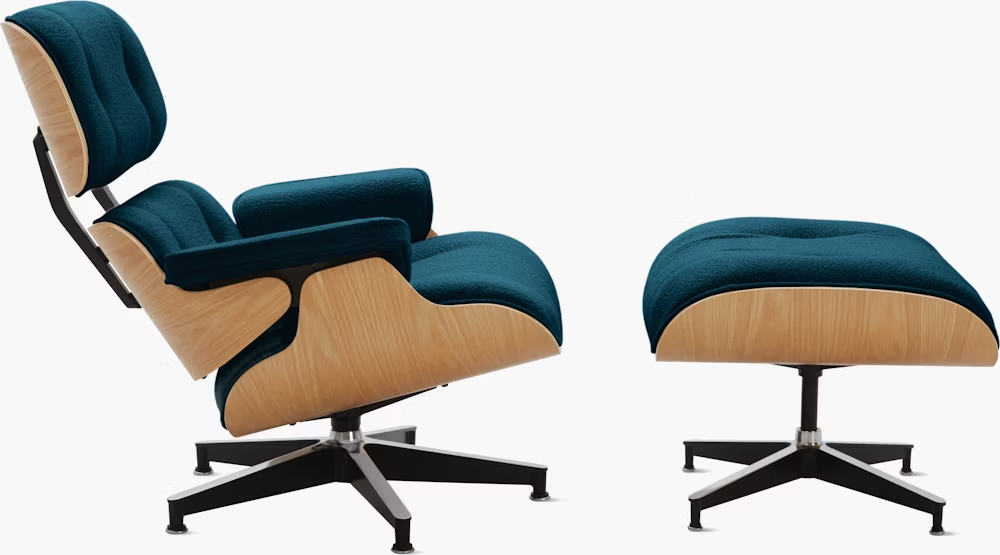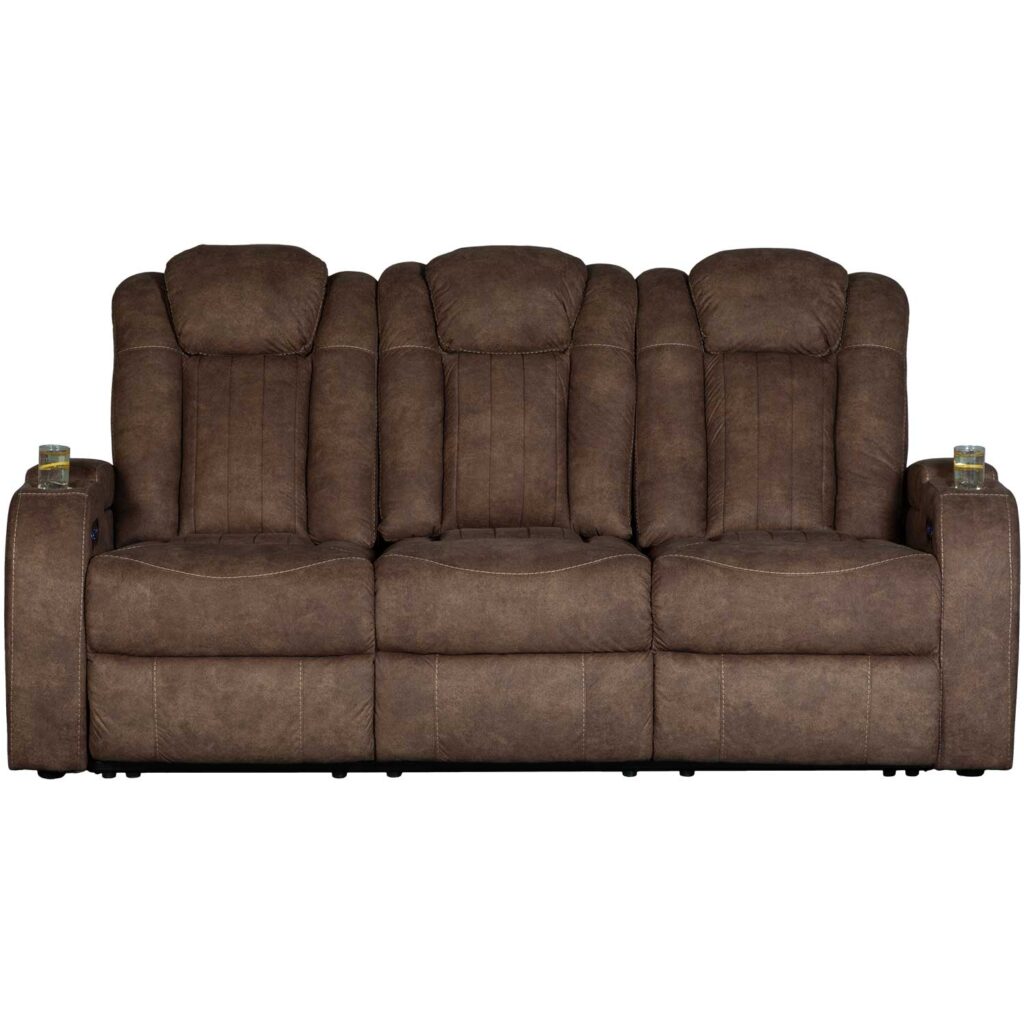Some toys look adorable on a shelf and… stay there. The Tres Wooden Barista Set is different: it’s equal parts display-worthy and play-ready. Wood, warm tones, and tactile knobs invite small hands to twist, scoop, tamp, pour, and “steam”—all the little motions that build real-world coordination and confidence.
In this article, you’ll learn how to set up a café corner that kids actually use, what learning is quietly happening during play (language, math, self-regulation), how to rotate accessories to keep interest high, and the simple cleaning and storage practices that make a wooden set last for years. We’ll also give you ready-to-use story prompts, scripts, and mini activities that scale from toddlers to early elementary.
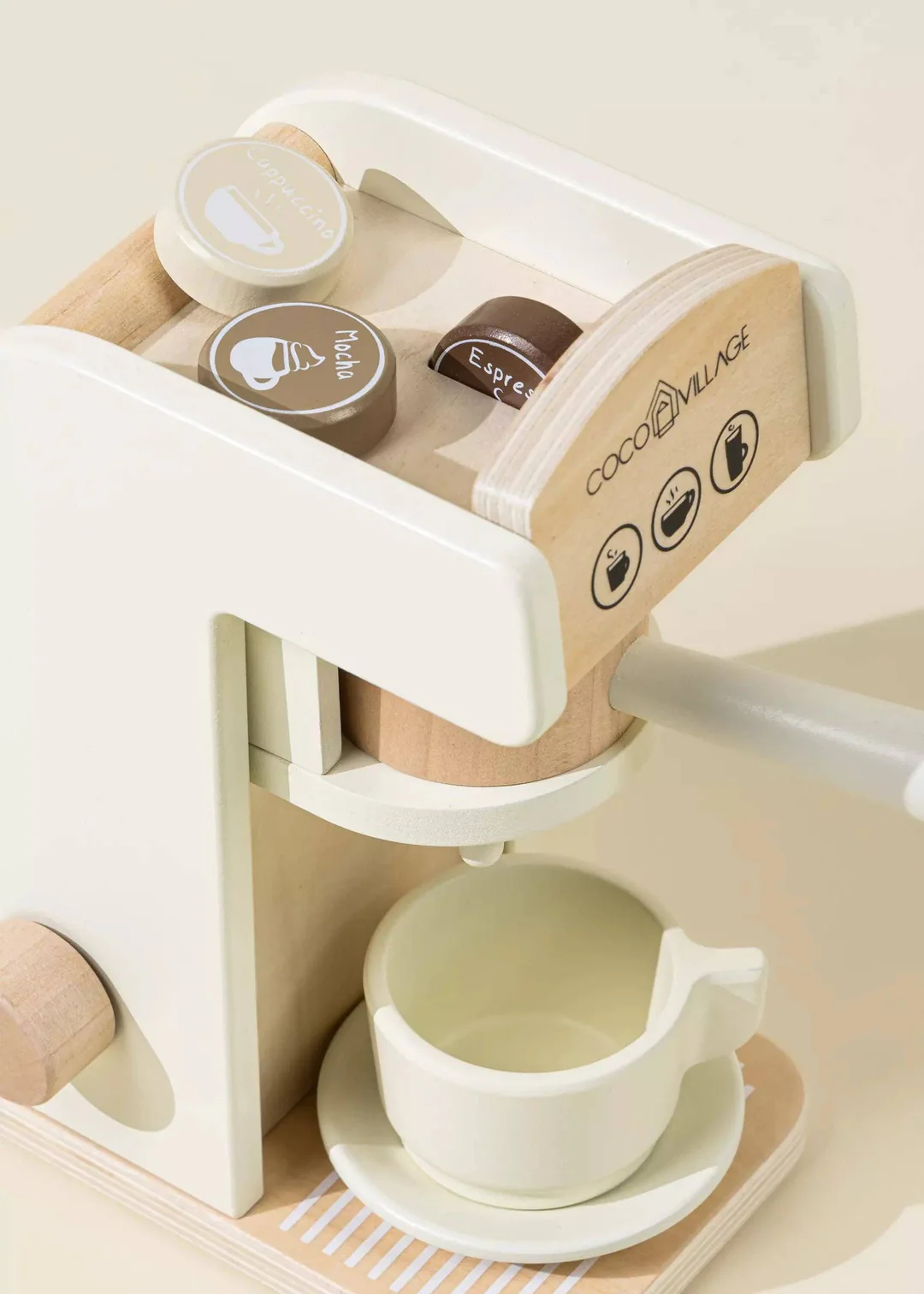
Why Coffee Pretend Play Works So Well
Pretend coffee is adult life in miniature: greet, take an order, measure, wait, serve, say “thank you.” That sequence is a social script kids see daily, so it’s easy for them to imitate—and imitation is the engine of early learning. With the Tres Wooden Barista Set, the script becomes multi-sensory: wooden beans to scoop, a portafilter to twist, a dial to “steam” milk. Each motion maps to fine-motor patterns used later for zippers, pencils, and utensils. The social side is just as powerful. Child as host, caregiver as customer—or sibling as co-worker—means practicing eye contact, turn-taking, and polite language in a low-stakes world where spills are pretend and second chances are infinite.
Set the Stage: From Box to “Open Café” in 10 Minutes
Choose a low, stable surface (kid-height shelf or play-kitchen counter) and give the set breathing room. Place cups and “milk” on the left, coffee and tools in the center, serving space on the right. This left-to-right flow subtly mirrors early reading direction for English learners. Add a small cloth or placemat under the machine so cups don’t skate; tuck a tiny basket nearby for spoons and pods/beans. A folded tea towel doubles as “bar rag” and encourages kids to clean as part of play. If your child is new to role play, model a two-line script: “Hi! What can I get you today?” / “One small latte, please.” That’s enough to spark the loop of order → make → serve → pay → tidy.
Language, Math, and Executive Function—All in a Cup
Language. Every pretend order is a chance to build vocabulary: temperature words (hot, warm, iced), taste (sweet, bitter, creamy), size (small, medium, large). Encourage full sentences: “I would like a small cappuccino with foam.” You’ll hear your child imitate tone and turn-taking right back at you.
Math. Counting scoops, “timing” a pretend brew to five, and exchanging play coins build number sense painlessly. Fractions sneak in when you ask for “half milk, half coffee,” or “three quarters full.”
Executive function. Multi-step tasks train working memory. Waiting for the “machine” builds impulse control. Switching roles builds cognitive flexibility. A tiny receipt pad extends planning and persistence—kids love checking off boxes.
Sensory & Motor Skills: The “Hidden Workout”
A wooden portafilter or scoop adds weight and resistance that plastic lacks. Twisting and tamping engage wrist rotation and grip strength; precise pouring refines bilateral coordination (one hand holds, the other tilts). If your set includes foam “milk,” swirling and tapping the cup to “settle bubbles” turns into a fine-motor ballet—small, controlled movements that pay dividends for handwriting later.
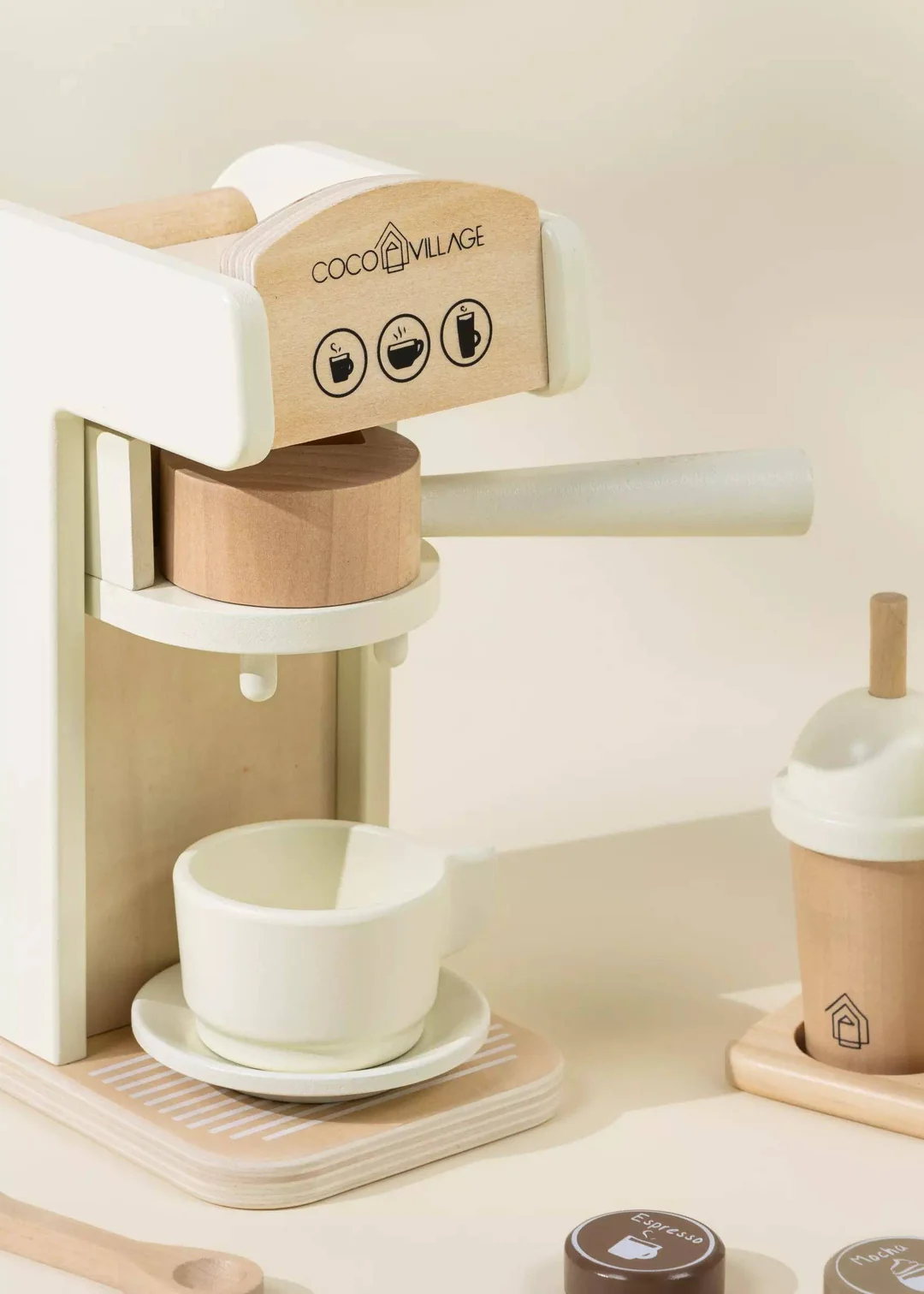
Story Prompts That Keep Play Fresh
Rotate the premise, not the toy. Kids don’t burn out on a set—they burn out on the story around it. Here are quick scripts you can swap week to week:
- Morning Rush: “Uh-oh, a line out the door!” Time “orders” with a sand timer. Celebrate fast-but-kind service.
- Latte Art Showcase: Cut tiny paper hearts/stars; place one atop the “milk” as art. Invite a “judge” (teddy) to vote for neatness and creativity.
- Delivery Day: Hide a small bag of “beans” in another room. The barista checks inventory, retrieves the bag, and restocks—executive function disguised as fun.
- Café & Bookshop: Pair with a basket of picture books. Customers “read” while waiting, then return books—cue to practice gentle handling and sharing.
Keep each scenario short. The goal is spark, not script. Once kids riff on the setup, step back and let them direct.
Social-Emotional Learning in a Safe Script
Hospitality is empathy in action. As the barista, a child reads moods, offers choices, and repairs missteps: “Oh! Wrong order—let me try again.” Apologizing and fixing mistakes becomes normal, not scary. For shy kids, the counter becomes a stage that grants purpose: you’re supposed to talk here, and the lines are clear. For high-energy kids, the routine channels movement into productive steps. If conflicts pop up (two baristas, one portafilter), model a waitlist: write names, set a 2-minute timer, switch. Simple systems beat negotiations.
Adapting by Age
Toddlers (18–36 months). Keep it sensory and single-step: scoop → pour; push button → “brew.” Narrate actions: “You’re turning the knob. Now the cup is filling.” Offer big praise for any sharing or waiting.
Preschool (3–5). Add roles (barista, cashier, customer), introduce counting and sizes, and invite simple menus. Let kids write “prices” with dots or stickers.
Early Elementary (5–7). Layer in reading/writing with printed menus, order slips, and “specials.” Try simple recipes: 2 scoops + 1 milk = latte; 1 scoop + foam = cappuccino. Introduce change-making with coins.
Materials & Safety: Wood Wins
Wooden toys bring weight, warmth, and durability. The Tres Wooden Barista Set is typically finished for smooth touch and easy wipe-downs. Teach safe play habits: cups stay on the counter, no swinging the scoop, no standing on stools during play. If younger siblings share the space, store the smallest accessories in a lidded tin on a higher shelf and rotate them in when you’re close by.
Cleaning & Care: Keep It Cute, Keep It Clean
Wood thrives on gentle care. Wipe with a barely damp microfiber cloth; dry immediately. Skip soaking and harsh sprays. For sticky spots (honey hands happen), use a drop of mild soap on the cloth, rinse cloth, wipe again, then dry. If a piece scuffs, a quick buff with a dry cloth often lifts marks; deeper dings usually read as patina rather than damage. Sun can fade pigments over time—park the café out of direct window glare when not in use.
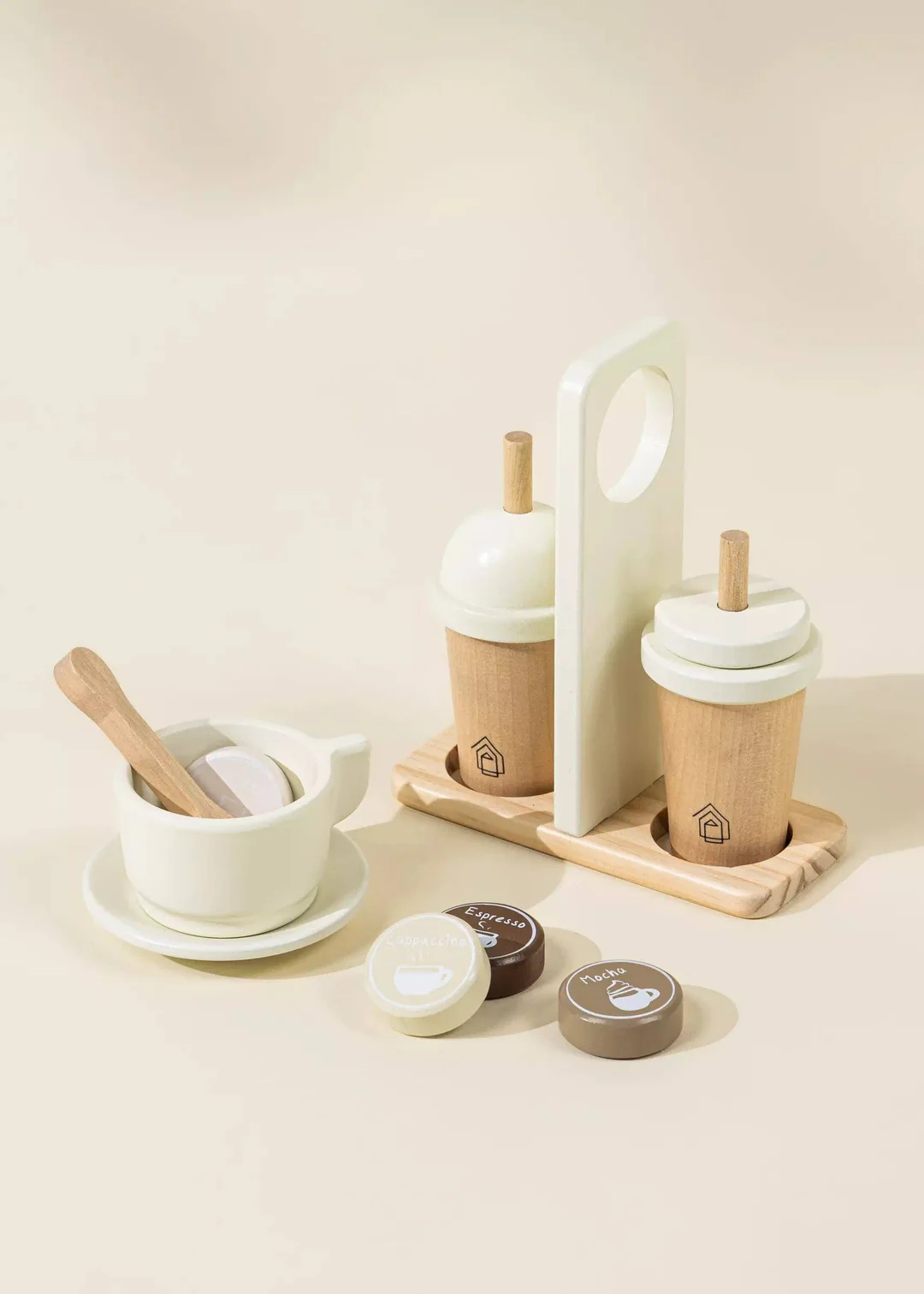
Storage That Invites Play (and Prevents Chaos)
Think café mise en place. Clear, shallow bins show everything at a glance. Keep “coffee” pieces together, “milk” and cups together, tools in a small tray. Tape a photo inventory inside the bin lid so cleanup becomes a matching game—kids love “making it match.” A small wall hook for aprons or café signs signals “this is a real place,” which draws kids back tomorrow.
Extend the World: Low-Cost Add-Ons That Matter
You don’t need more stuff—you need useful stuff. A child-sized notepad and pencil turns orders into writing practice. A set of dot stickers becomes “loyalty stamps.” A tiny bell at the counter adds auditory delight (and a self-regulation challenge—“ring once per order”). If you already own a play kitchen, park the barista station beside the sink so kids can “rinse” cups and reset—hello, executive function.
For SLPs, OTs, and Teachers: How to Use It Clinically or in Class
Therapists love café play because it hits multiple goals without feeling clinical. For speech-language practice, pre-teach sentence frames (“May I have…?” “Would you like…?”) and a three-step sequence with picture cards. For fine-motor work, dose repetitions: 10 twists of the portafilter, 10 controlled pours between cups. In classrooms, the set anchors a dramatic-play center: pair with menu cards that use icon + word, price tags for counting, and a clock for “opening hours.” Rotate roles weekly to ensure everyone practices cashier math and customer language.
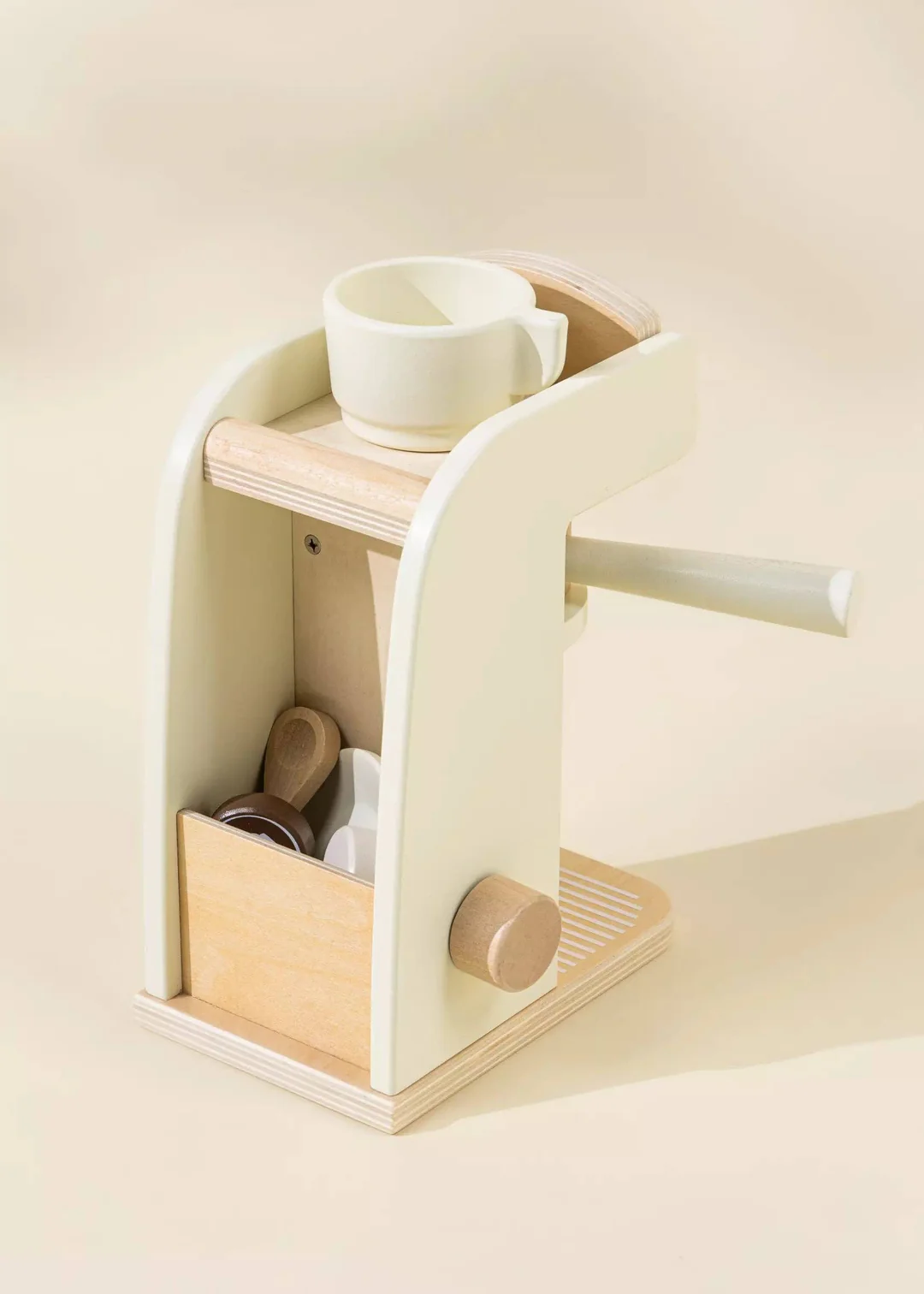
Conclusion
When a toy naturally weaves language, math, manners, and motor skills into one cozy ritual, you’ve found a keeper. The Tres Wooden Barista Set invites kids into a world they recognize and gives them tools scaled to their hands. With a simple café setup, a few rotating scripts, and light-touch guidance, playtime becomes a studio for empathy and problem-solving—complete with the satisfying “psssst” of pretend steam. Keep care simple (wipe, dry, store smart), follow your child’s imagination, and say yes to “one more order.” You’ll be surprised how much learning fits inside a tiny cup.
FAQ
- What ages is the Tres Wooden Barista Set best for?
Toddlers can explore single steps (scoop, pour); preschoolers handle roles and menus; early elementary kids add reading, writing, and money play. Supervise small pieces with under-3s. - Does wooden play mean “Montessori”?
It can align with Montessori principles (order, real-life tasks, independence) but works in any play philosophy when you keep the setup accessible and child-led. - How do I keep the game from getting chaotic?
Use a tiny menu, two-line scripts, and a bell “one ring per order” rule. Photo inventories turn cleanup into a matching game. - What learning is really happening?
Language (orders, manners), math (counting, size, simple addition), executive function (planning, waiting, switching roles), and fine-motor skills (twist, tamp, pour). - Can I combine this with a play kitchen?
Yes—place the barista station next to the sink or oven to expand scenarios (baking pastries, washing cups, restocking). - How do I clean sticky residue?
Wipe with a barely damp cloth and a drop of mild soap; dry immediately. Avoid soaking and abrasive sponges. - Any tips for siblings who both want to be the barista?
Create a waitlist with a 2-minute timer, or split roles: barista + cashier. Switch on the bell ring every two orders. - What if my child only serves “coffee” and won’t expand play?
Change the story: add iced drinks (ice cubes from felt), delivery day, or “bookshop café.” New context refreshes the same motions.

